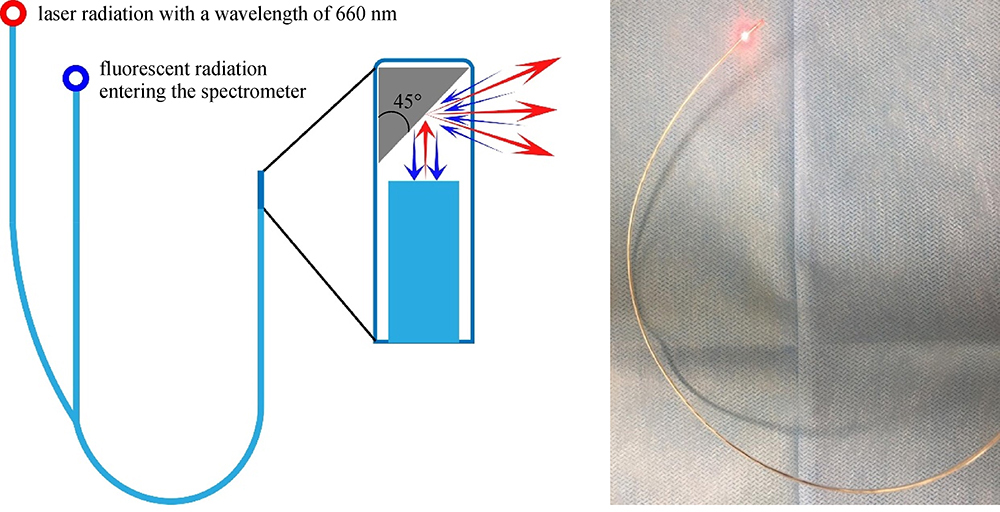Currently, with the development of radical and palliative treatments of oncological neoplasms of various localizations and natures, modern theranostics methods, such as fluorescence diagnostics (FD) and photodynamic therapy (PDT), are proving to be the most efficacious. The main advantage of FD and PDT is the possibility of combining tumor treatment and diagnosis in one joint procedure [
14,
15]. In addition, unlike chemotherapy, obstructive jaundice is not a contraindication for FD and PDT [
16]. An important advantage of the spectroscopic analysis of tissues consists of the possibility to obtain information regarding the dynamics of various biological processes in real-time. With FD, the degree of photosensitizer (PS) accumulation in the tumor tissue is determined by the intensity of the fluorescent signal. This makes it possible to accurately detect the boundaries of the pathological growth, select the optimal parameters for the PDT session, and evaluate the therapy effectiveness after the session. PS accumulates selectively in tumor cells and is activated by irradiation with light with a wavelength corresponding to the peak absorption of the drug. In this case, a photochemical reaction occurs, causing the formation of singlet oxygen, which destroys tumor cells. This is due to that the fact that singlet oxygen, the main photodynamic process intermediator, possesses a short lifetime in biological systems. Theoretical assessments have indicated that the mean free path of singlet oxygen in biological media is approximately 10–100 nm [
17]. Hence, the photodynamic reaction causes molecular and cellular destruction only in close proximity to the PS binding sites. In addition to the direct phototoxic effect on cancer cells, an important role in the destruction mechanism is played by the disruption of blood supply to the tumor due to microthrombosis and damage to the vascular endothelium. These methods have also been widely used in the diagnosis and treatment of bladder cancer and skin cancer, as well as to enable recanalization of a tumor-associated stricture of the esophagus, etc. [
18,
19]. In previous studies, investigating the damage to the bile ducts caused by the tumor, two lasers with different characteristics were used: a diagnostic laser with a wavelength of 635 nm and a power density of 3–5 mW/cm
2 for video FD and a therapeutic laser with a wavelength of 660 nm and an energy density of 150–200 J/cm
2 for PDT. However, these systems were accompanied by a number of inconveniences, in particular, the need to substitute the optical fiber and laser after FD to proceed with PDT. In this work, the radiation source for FD and PDT was optimized, and a single laser source with a wavelength of 660 nm and an adjustable power up to 2 W was developed.








